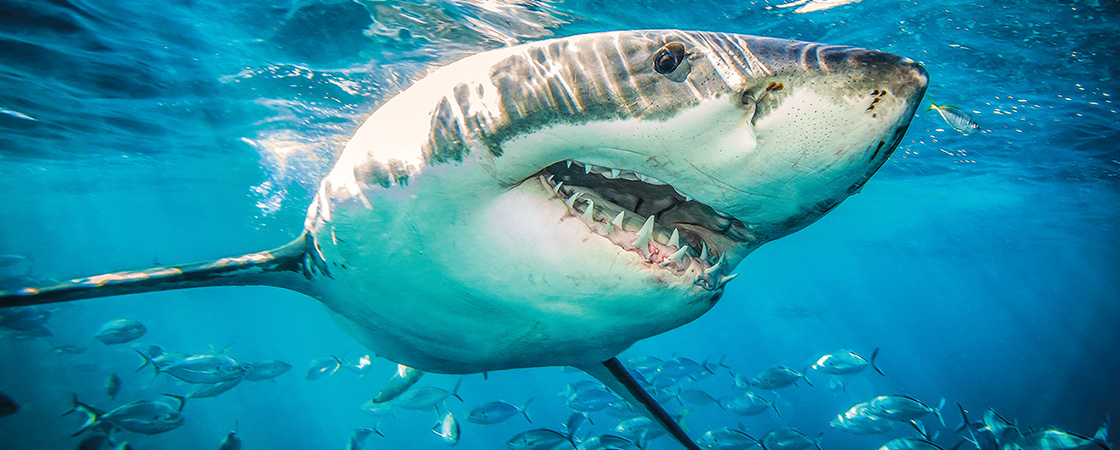Imagine that you are the most feared creature in the ocean: the great white shark. You spread terror and panic wherever you go. Fish scatter like confetti. Dolphins speed away. Even some giant whales aren’t safe around you.
And no wonder. You can kill almost any animal in the sea.
You attack by surprise. You strike from below, speeding toward your prey. You slam into it with your 4,000-pound body.
And then—chomp!
Your jaws are one of nature’s most powerful weapons. You have 300 teeth lined up in jagged rows. One snap of your jaws can easily kill a creature many times your size.
But you are not just a killing machine. You are smart and curious. You are incredibly important to the world’s oceans. And you are in danger.
Imagine that you are the most feared creature in the ocean: the great white shark. You spread fear and panic wherever you go. Fish scatter like confetti. Dolphins speed away. Even some giant whales aren’t safe around you.
And no wonder. You can kill almost any animal in the sea.
You attack by surprise. You hunt from below, speeding toward your prey. You slam into it with your 4,000-pound body.
And then—chomp!
Your jaws are powerful. One snap can kill a creature much bigger than you. That’s because you have 300 teeth lined up in jagged rows.
But you are not just a killing machine. You are smart and curious. You are extremely important to the world’s oceans. And you are in danger.
Imagine you are a great white shark. Other animals speed away from you in fear. You can kill almost any animal in the sea. Your jaws are lined with 300 sharp teeth.
But you are not just a killer. You are curious and very important to the ocean. And you are in danger.

